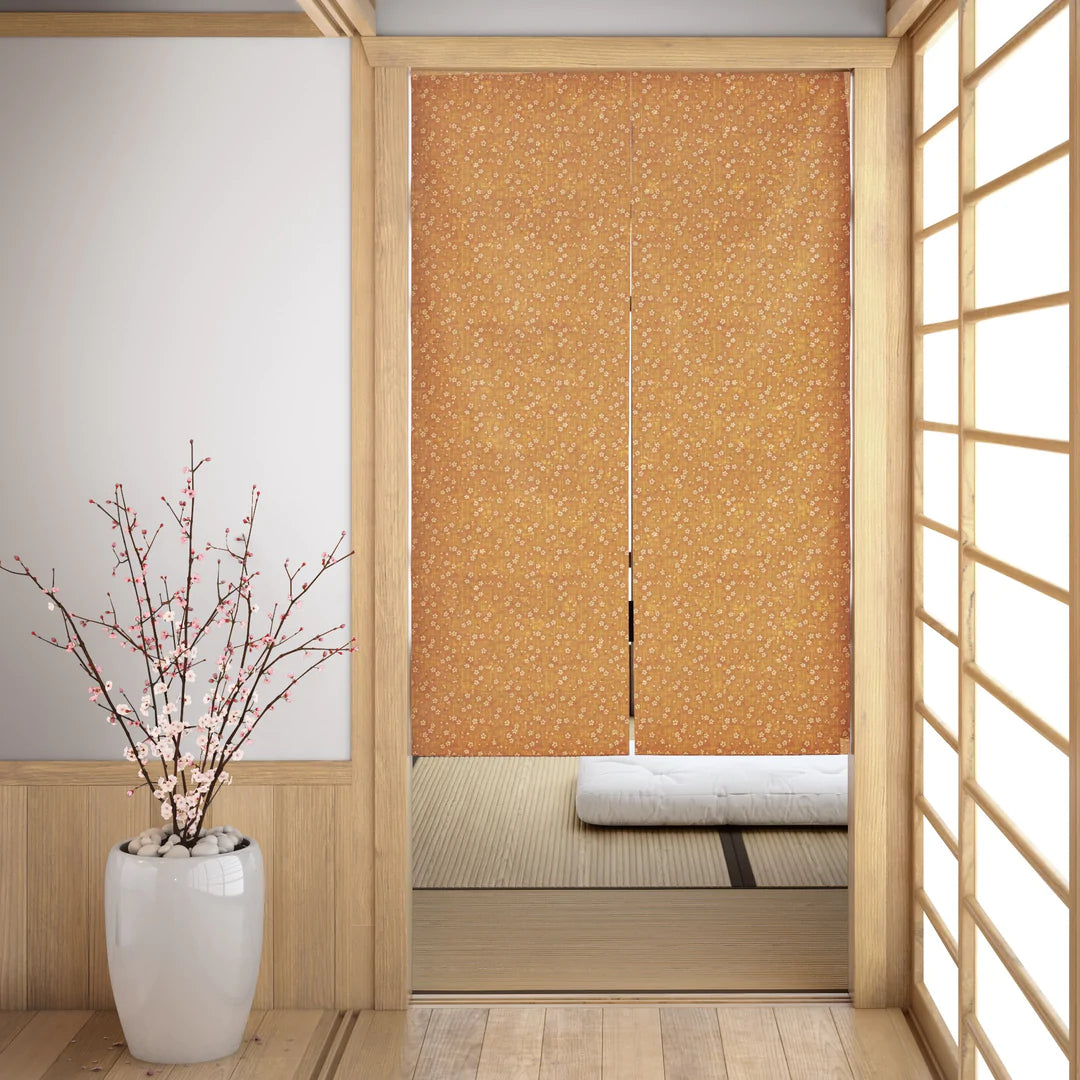You may have noticed, perhaps while traveling or in different forms of media, Japanese homes and businesses often have vertically slit fabric curtains that hang partway down the length of the doorway. These unique fixtures, known as norens (暖簾), are a recognizable symbol in Japanese pop culture and boast an interesting history that delves a lot deeper into Japanese history and culture than just functioning as charming decor.

Pictured: J-Life Tidal Wave Blue Noren Door Hanging
What exactly is a noren?
A typical Japanese noren is a small fabric curtain that hangs in the doorways of businesses and homes. They are usually not thick and heavy, but are rather made of lightweight or semi-sheer fabric and only hang about ¾ of the length of the doorway they’re hung in. These Japanese door curtains do not function the same as window curtains- they are designed to remain “closed” at all times. Instead of sliding them on their rod like you would a typical window curtain to “open” it, a noren is simply pushed aside as you pass through it. Many noren are actually a single panel with a slit in it, so the two sides cannot be separated. They are usually decoratively printed with traditional Japanese art and patterns, such as cherry blossoms, seika ha, and koi fish.
Where did norens come from?
Norens are believed to have first originated in Japan’s markets during the early medieval era (c. 1100 AD) as a way for shopkeepers to keep dust, debris, rain, smoke etc. from the cluttered medieval streets out, while also allowing for temperature control. (They kept heat in during winter and let cool air in during summer.) Norens also let businesses keep their entrance open and welcoming while allowing potential patrons a glimpse of what’s inside, unlike a door.
Additionally, norens served as a form of advertisement for shopkeepers and restaurants. Japanese business owners would hang norens that displayed the business name and logo, or illustrations pertaining to their business, as a form of advertisement. Different styles and colors of norens possessed different meanings as well. For example, hanging a certain colored noren could distinguish distinct neighborhoods/ districts or types of goods sold at a shop.
While Japanese marketplaces may look vastly different than they did 900 years ago, the practical applications of norens in this setting still stand to this day- although color coding via norens is mostly nonexistent now. In the present day, shops also sometimes hang some smaller types of norens that function as signage and decor in and around their business, similar to how some shops in the West may use flags to advertise their products or theme. If you walk through any street market in Japan you’re sure to see lots of colorful norens!

How are norens used today?
In residential settings today, the Japanese noren curtain functions primarily as an indoor room divider. The historical use of the noren in outdoor entrances carried over to the Japanese home as well but to a much lesser degree. Japanese people generally live in small spaces, so norens offer privacy and can cover clutter without entirely closing a space off like a door would. They help to mentally separate spaces without entirely sectioning a room off, allowing the space to still feel roomy. The Japanese tatami room, for example, is a multipurpose space found in traditional Japanese homes. This is a common place to hang a noren since privacy may be desired depending on what the space is currently being used for, such as when hosting guests.
The Japanese curtain room divider is adaptable to both traditional and modern Japanese spaces, as well as non-Japanese homes. Some creative ideas for using a noren in any home include:
- Hang it in the kitchen doorway so it can separate the spaces but not get in the way while your hands are full. This is great for hosting and carrying lots of dishes in and out of the kitchen while simultaneously keeping the kitchen out of sight of company.
- Display as wall art, like you would a tapestry.
- Hang your Japanese curtain somewhere where you may want to allow for privacy but don’t need total separation, such as an office, playroom, exercise space, or meditation room.
- Use in outdoor screen and glass doorways as a privacy shade, insect/ debris blocker, and for temperature and light control.
- Norens can be used anywhere inside or outside; hang one in a patio space or in the doorway of a screened porch, pergola, or gazebo.

